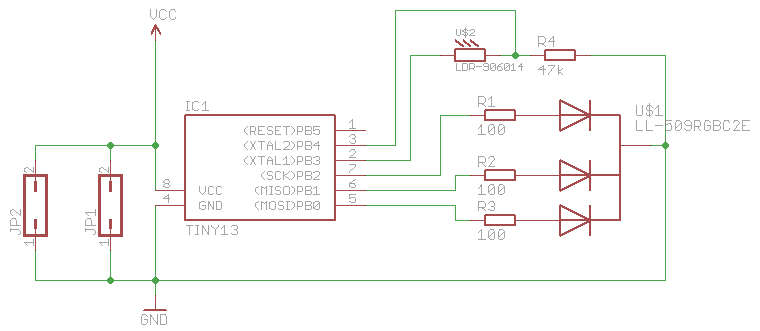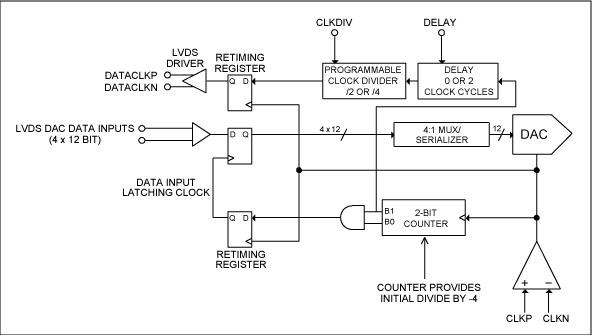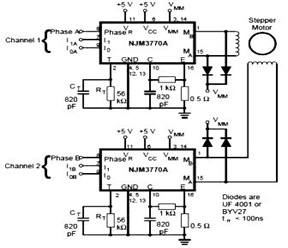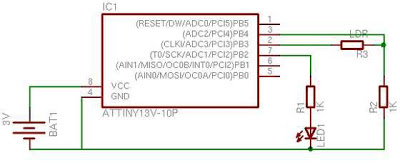
synchronizing fireflies ng

This is a remake of the fireflies project that was created a year ago. The concept revolves around the emergence of patterns, particularly the synchronization of hundreds or thousands of fireflies. Initially, they flash randomly, but over time, influenced by one another, they begin to flash in sync. This circuit simulates fireflies using small microcontrollers, where each firefly operates autonomously rather than following a preprogrammed pattern, embodying a self-organizing system. Each firefly possesses a value representing its flash power, which increases over time. When this power reaches a certain threshold, the firefly flashes, and the power resets to zero. If a firefly detects another nearby flash, it receives a small boost to its power, allowing it to flash slightly earlier than before. Repeating this process can lead to all fireflies flashing in unison. The RGB firefly uses color to express its mood; when in sync, it flashes a relaxed blue, while detecting out-of-sync flashes causes it to become uncomfortable, changing colors to green, yellow, and red. The circuit is relatively simple, consisting primarily of a microcontroller, a light sensor, and an RGB LED. The sensor and resistor R4 form a voltage divider, with an ADC (Analog to Digital Converter) channel at pin 3 used to read sensor values. The circuit is designed for a 5V power supply and lacks an integrated power regulator. Various types of photoresistors can be used; two different versions were tested, both functioning well, though R4 must be adjusted accordingly since R4 and the photoresistor create a voltage divider. Recent experiments suggest that a phototransistor may be more suitable due to its lack of memory effect and faster response time (approximately 5ms compared to 50ms for LDRs). The SFH 3310 phototransistor and a 100k resistor for R4 were chosen. It is important to ensure that the spectral sensitivity of the light sensor aligns with human eye sensitivity (approximately 400 nm to 700 nm). The orientation of the LDR is irrelevant, but for the phototransistor, the long leg (emitter) should be inserted at the bottom. After soldering, prepare the LED, which should be clear with a lens on top; sanding the surface will help disperse the light in all directions. Engaging with these fireflies is captivating due to their non-deterministic nature, producing unique patterns and behaviors with each activation. The PCB design was successful, marking the second iteration produced, instilling confidence for larger batches in the future.
The circuit design is based on a microcontroller that facilitates the autonomous operation of each firefly unit, allowing for real-time interaction and adjustment based on local stimuli. The microcontroller is programmed to handle the threshold logic for flash power accumulation and reset, as well as the detection of other flashes via the light sensor. The light sensor, whether a photoresistor or phototransistor, plays a crucial role in determining the ambient light conditions and the timing of the flashes.
The voltage divider formed by the light sensor and resistor R4 is essential for scaling the sensor's output to a level suitable for the microcontroller's ADC input. The choice of R4 is critical; it must be selected to provide an appropriate voltage range while limiting current through the sensor to prevent damage. The use of a phototransistor, specifically the SFH 3310, enhances the circuit's responsiveness and accuracy in detecting light changes, which is vital for maintaining synchronization among the fireflies.
The RGB LED serves as the visual output, changing colors based on the synchronization status of the fireflies. The design encourages the use of clear LEDs with a roughened surface to maximize light dispersion, enhancing the visual effect of the flashing. The entire system operates on a 5V power supply, which simplifies the design but requires careful management of power consumption and component ratings.
Overall, this circuit not only simulates the fascinating phenomenon of firefly synchronization but also provides a platform for exploring concepts of emergent behavior, self-organization, and interactive electronic design. The project exemplifies the intersection of art and technology, resulting in a captivating display that evolves with each interaction.This is a remake of the fireflies which I did a year ago. I was always fascinated by the emergence of patterns. One I like most is the synchronization of hundreds or thousands of fireflies. First they flash randomly but after some time and influencing each other, they flash in sync. This circuit simulates fireflies with small microcontrollers. Not e that every firefly acts completely autonomously, it is not a preprogrammed pattern. It is a self organizing system. Each firefly has a value that stands for the power to flash. This value rises over time. If the power reaches a certain limit, the firefly flashes and the power is reset to zero. If the firefly detects another flash nearby, it increases the power by a small boost value. That way it will flash slightly earlier than last time. Doing so over and over again may lead to all fireflies flashing in sync. The RGB-firefly uses color to express its mood. If all is in sync, it will flash in relaxed and cool blue. If it detects flashes that are not in sync, it will get a bit uncomfortable and the color will slightly change to green, yellow and red. The circuit is rather simple. Main parts are the microcontroller, the light sensor and the RGB-LED. The sensor and R4 are forming a voltage divider. An ADC (Analog Digital Conversion) channel at pin 3 is used to read the values of the sensor. The circuit is designed for 5V power supply. It has no integrated power regulator. Various types of photoresistors exist. I tried two different versions and both work well. Only resistor R4 has to be adjusted, as R4 and the photoresistor are building a voltage divider. Choose R4 in a way, that gives you a good range of voltage and still limits the current through the photoresistor.
My latest experiments showed that a phototransistor seems even better suited. Compared to the LDR, it does not have a memory effect and reacts faster (~5ms compared to ~50ms). I chose the SFH 3310 and 100k for R4. One thing to remember while choosing a light sensor, is that the spectral sensitivity of the sensor has to match the humans eye sensitivity (~400 nm ~700 nm). Next insert the LDR. For the LDR the orientation does not matter. For the phototransistor it does! The phototransistor has a long (emitter) and a short leg (collector). Insert it with the long leg at the bottom. And solder it. Now prepare the LED. Mine are clear and have a lens on top. Use sandpaper to roughen the surface. That way the light of the LED will be emitted in all directions. Playing with these fireflies is really mesmerizing. It`s not like most computer controlled things because it is non deterministic. Every time you start it, it will produce new patterns and behave differently. I am quite happy how well the PCB worked out. It was my second design that I have had produced. Now I am feeling confident enough to go for a bigger batch of PCBs. 🔗 External reference
The circuit design is based on a microcontroller that facilitates the autonomous operation of each firefly unit, allowing for real-time interaction and adjustment based on local stimuli. The microcontroller is programmed to handle the threshold logic for flash power accumulation and reset, as well as the detection of other flashes via the light sensor. The light sensor, whether a photoresistor or phototransistor, plays a crucial role in determining the ambient light conditions and the timing of the flashes.
The voltage divider formed by the light sensor and resistor R4 is essential for scaling the sensor's output to a level suitable for the microcontroller's ADC input. The choice of R4 is critical; it must be selected to provide an appropriate voltage range while limiting current through the sensor to prevent damage. The use of a phototransistor, specifically the SFH 3310, enhances the circuit's responsiveness and accuracy in detecting light changes, which is vital for maintaining synchronization among the fireflies.
The RGB LED serves as the visual output, changing colors based on the synchronization status of the fireflies. The design encourages the use of clear LEDs with a roughened surface to maximize light dispersion, enhancing the visual effect of the flashing. The entire system operates on a 5V power supply, which simplifies the design but requires careful management of power consumption and component ratings.
Overall, this circuit not only simulates the fascinating phenomenon of firefly synchronization but also provides a platform for exploring concepts of emergent behavior, self-organization, and interactive electronic design. The project exemplifies the intersection of art and technology, resulting in a captivating display that evolves with each interaction.This is a remake of the fireflies which I did a year ago. I was always fascinated by the emergence of patterns. One I like most is the synchronization of hundreds or thousands of fireflies. First they flash randomly but after some time and influencing each other, they flash in sync. This circuit simulates fireflies with small microcontrollers. Not e that every firefly acts completely autonomously, it is not a preprogrammed pattern. It is a self organizing system. Each firefly has a value that stands for the power to flash. This value rises over time. If the power reaches a certain limit, the firefly flashes and the power is reset to zero. If the firefly detects another flash nearby, it increases the power by a small boost value. That way it will flash slightly earlier than last time. Doing so over and over again may lead to all fireflies flashing in sync. The RGB-firefly uses color to express its mood. If all is in sync, it will flash in relaxed and cool blue. If it detects flashes that are not in sync, it will get a bit uncomfortable and the color will slightly change to green, yellow and red. The circuit is rather simple. Main parts are the microcontroller, the light sensor and the RGB-LED. The sensor and R4 are forming a voltage divider. An ADC (Analog Digital Conversion) channel at pin 3 is used to read the values of the sensor. The circuit is designed for 5V power supply. It has no integrated power regulator. Various types of photoresistors exist. I tried two different versions and both work well. Only resistor R4 has to be adjusted, as R4 and the photoresistor are building a voltage divider. Choose R4 in a way, that gives you a good range of voltage and still limits the current through the photoresistor.
My latest experiments showed that a phototransistor seems even better suited. Compared to the LDR, it does not have a memory effect and reacts faster (~5ms compared to ~50ms). I chose the SFH 3310 and 100k for R4. One thing to remember while choosing a light sensor, is that the spectral sensitivity of the sensor has to match the humans eye sensitivity (~400 nm ~700 nm). Next insert the LDR. For the LDR the orientation does not matter. For the phototransistor it does! The phototransistor has a long (emitter) and a short leg (collector). Insert it with the long leg at the bottom. And solder it. Now prepare the LED. Mine are clear and have a lens on top. Use sandpaper to roughen the surface. That way the light of the LED will be emitted in all directions. Playing with these fireflies is really mesmerizing. It`s not like most computer controlled things because it is non deterministic. Every time you start it, it will produce new patterns and behave differently. I am quite happy how well the PCB worked out. It was my second design that I have had produced. Now I am feeling confident enough to go for a bigger batch of PCBs. 🔗 External reference



